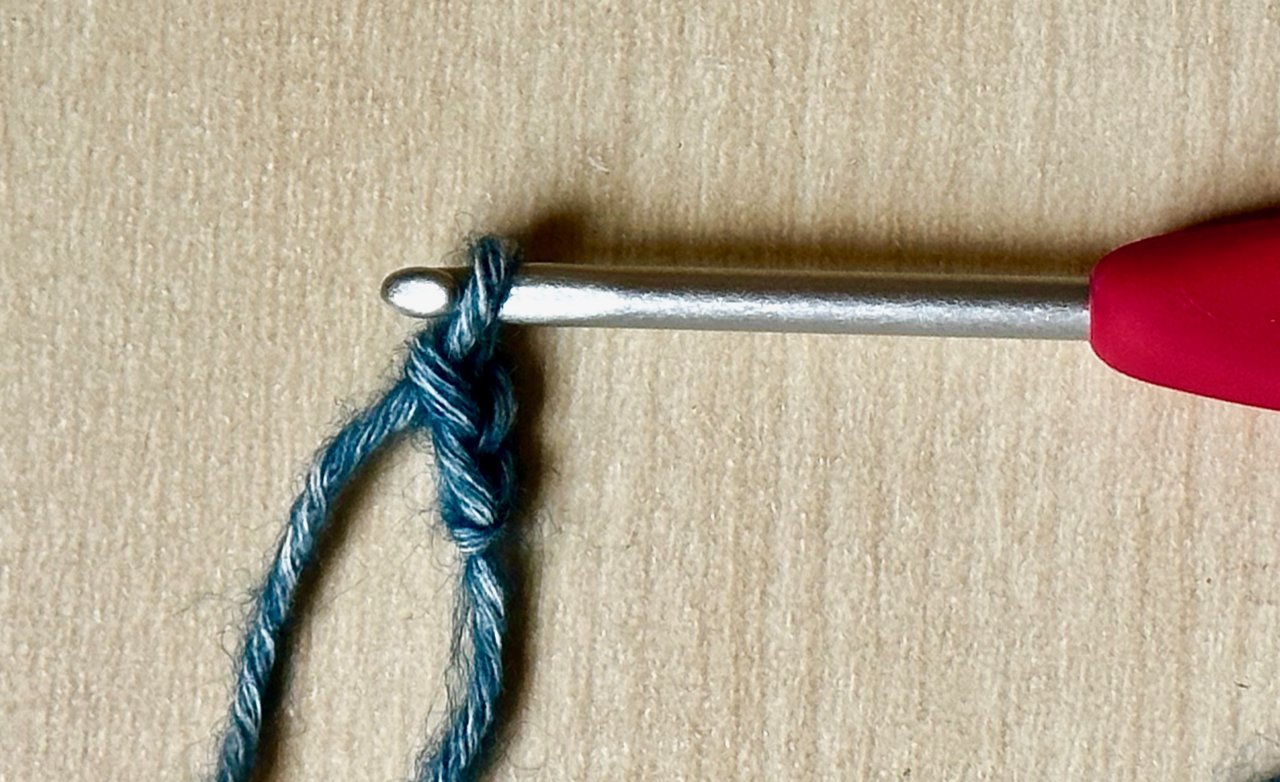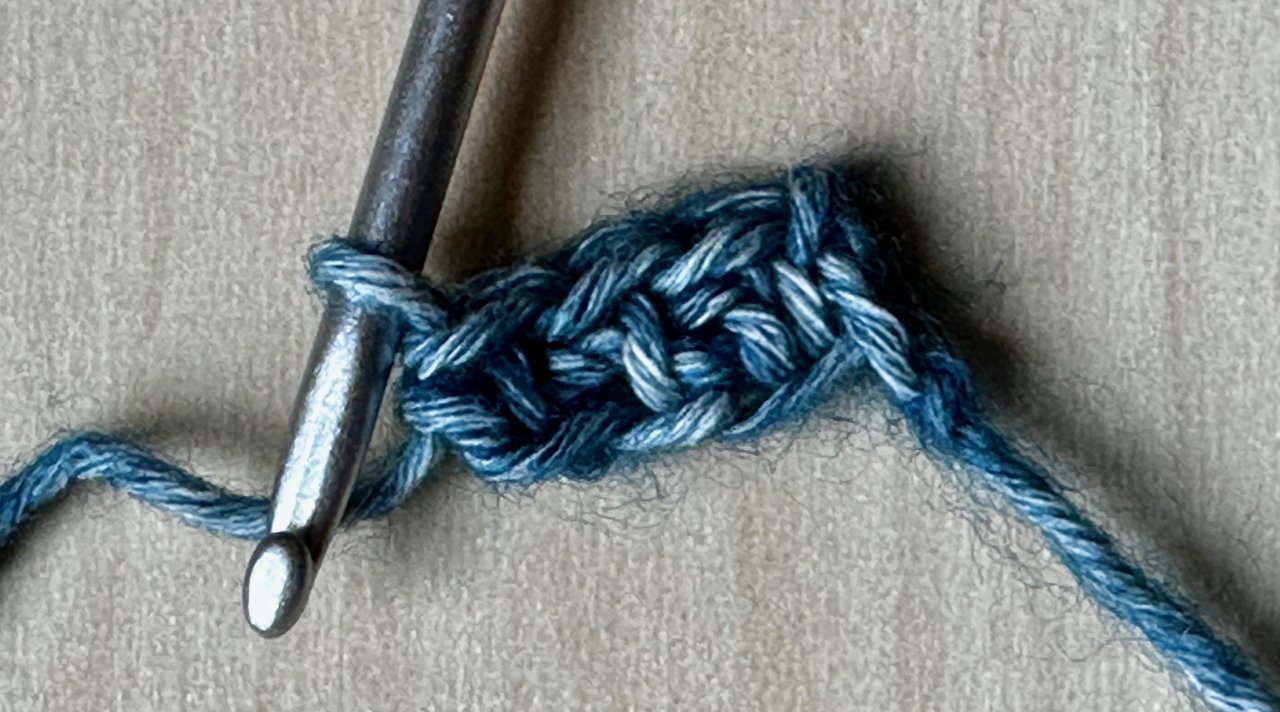This is a combined post, since I am very late with blogging about my A Family Christmoose pattern release and Imbolc was yesterday! Thank you to everyone who purchased A Family Christmoose pattern and kits. They were first seen at Yarndale and I released them on my website in December, just in time for Christmas. There are a few kits left in my online store if you want to get ahead for next year (and be more organised than me!).
My original Christmoose for secret Santa
I had the idea for the Christmoose in 2019 when I gave one as my wooly secret Santa gift in my knitting group. I made the three members of the family that year and they have been up for Christmas every year since then, but it took until last summer for me to get round to getting the pattern written up and tested.
Three Christmoose in a row
The Christmoose head and body are knitted seamlessly in the round using short row shaping to get the moose-shape. They have pretty little stranded colourwork sections on their body and the legs are sewn on with cute buttons so they are poseable. Finally, the antlers are knitted as one piece and sewn on, along with beads for their eyes. I think they make a very sweet family.
The littlest Christmoose
The pattern is available on Ravelry and Payhip, and kits containing all the pattern, yarn, toy stuffing, buttons and beads are available in my website store. I was struggling to put my little Christmoose family away despite the festive season being well and truly over, so I decided to keep them up until Imbolc.
As the winter chill continues to envelop the world, most have already dismantled their Christmas and Yuletide decorations shortly after the holiday season, bidding farewell to the festive ambiance that brightened their homes. However, an age-old tradition suggests an alternative approach, encouraging us to keep the festive spirit alive until Imbolc. In this blog post, I will explain why I have extended the life of my festive decorations this year, and delve into the rich history behind this practice.
Oh Christmas Tree!
I love my festive decorations!
I treat myself to a real tree every year from the local National Trust. I love having a real tree in the house, the smell of pine and having a bit more real greenery in the house. This year I was very late in decorating the tree and it only went up at Yule (22nd December) - Well that is not entirely true, the tree was up and in place for a couple of weeks before I got round to putting the decorations on it. December was busy! I filled our tree with all the handmade decorations that my knitting group makes each year for a secret Santa. Every decoration is made by a friend or has a special meaning to me. It makes my tree colourful and makes me happy. I love the soft warm white lights on the tree and the glow it gives the corner of my lounge, making my home feel cozy in the stormy weather. As I put it up so late, I really did not want to take it down by the fifth night, it seemed far too soon. So I decided to follow the medieval tradition of keeping my decorations up until Christmas.
A special bauble that belonged to my Dad
Celebrating Light in the Darkness
The winter months in Yorkshire have long nights and cold days, making the world outside seem dark and dormant. Christmas decorations, adorned with twinkling lights and vibrant colours, bring a sense of warmth and joy to our homes during this gloomy season after all the festivities have finished. By keeping these decorations up until Imbolc or Candlemas, celebrated in early February, we continue to embrace the light and counteract the winter blues.
Honouring Nature's Rhythms
Imbolc, a Celtic festival marking the halfway point between the winter solstice and the spring equinox, falls around the beginning of February. This festival is a celebration of the returning light and the first signs of spring. By keeping Christmas decorations up until Imbolc, we align our festivities with the natural rhythms of the Earth, acknowledging the gradual awakening of nature from its winter slumber. It helps me be thankful for the gradual increase in daylight and makes me more aware of the changes happening in nature. The first snowdrops appear around Imbolc and these encouraging signs of spring make me less sad when the decorations finally come down.
Maintaining a Sense of Community
Extending the period of festive decorations fosters a sense of community and shared joy. In a world that currently feels plagued by stress and challenges, the warmth and familiarity of Christmas decorations act as a reminder of the importance of togetherness, and what is really important. Which is not the dusting or the vacuuming of where the tree sits.
My Imbolc display for this year
A Unique Twist on Seasonal Decor
Rather than succumbing to the post-holiday cleanup routine, keeping decorations up until Imbolc allows for a unique and refreshing twist on seasonal decor. Instead of stashing away my favourite ornaments, I get to continue to enjoy their beauty and significance, creating a prolonged and magical ambiance at home.
So, this year, consider letting the twinkling lights and colorful ornaments linger a bit longer, and revel in the joy they continue to bring well into the heart of winter.
































































